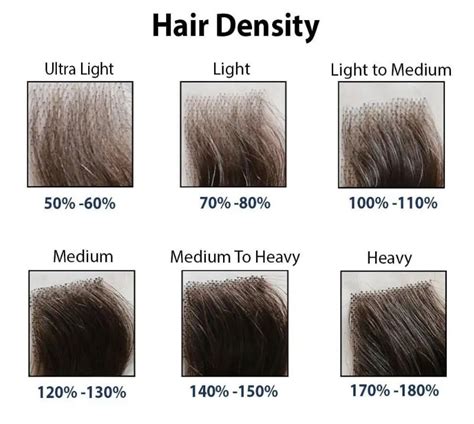Introduction
Hair replacement systems have revolutionized the way individuals combat hair loss, offering a natural-looking solution to thinning hair or baldness. Among the myriad options available, two densities stand out as the most popular: 260 density and 180 density. Understanding the differences between these densities is crucial for making an informed decision that meets specific hair needs and preferences.

Density Explained
Density refers to the number of hairs per square inch of a hair replacement system. A higher density system contains more hairs, resulting in a fuller and thicker appearance. However, it is important to consider that not everyone can tolerate a high-density system due to factors such as scalp sensitivity or skin texture.
260 Density
260 density systems boast an impressive 260 hairs per square inch, providing maximum coverage and creating the illusion of a full head of hair. This density is ideal for individuals with significant hair loss or who prefer a fuller, more voluminous look.
Pros:
- Maximum coverage
- Natural-looking fullness
- Suitable for advanced stages of hair loss
Cons:
- Can be uncomfortable for sensitive scalps
- May require more maintenance
- Not suitable for all individuals
180 Density
180 density systems feature 180 hairs per square inch, offering a moderate level of coverage and a natural appearance. This density is less dense than 260 but provides sufficient coverage for mild to moderate hair loss. It is often the preferred choice for individuals who prioritize comfort and a more discreet look.
Pros:
- Comfortable to wear
- Requires less maintenance
- Suitable for mild to moderate hair loss
Cons:
- Less coverage than higher densities
- May not provide maximum fullness
Comparison Table
| Feature | 260 Density | 180 Density |
|---|---|---|
| Hairs per square inch | 260 | 180 |
| Coverage | Maximum | Moderate |
| Appearance | Fuller, more voluminous | More natural, discreet |
| Comfort | Can be uncomfortable | Comfortable |
| Maintenance | Requires more maintenance | Requires less maintenance |
Tips and Tricks
- Consult with a professional hair replacement specialist to determine the most suitable density for your individual needs.
- Consider your lifestyle and preferences when selecting a density.
- Start with a lower density and gradually increase it as needed.
- Use a gentle cleanser and conditioner to prolong the lifespan of your system.
- Avoid using harsh chemicals or heat styling tools.
Common Mistakes to Avoid
- Overestimating density: Choosing a density that is too high can lead to discomfort and an unrealistic appearance.
- Underestimating density: Selecting a density that is too low may not provide adequate coverage and can be visually unappealing.
- Neglecting maintenance: A hair replacement system requires regular cleaning and maintenance to stay in optimal condition.
Conclusion
260 density and 180 density hair replacement systems offer distinct advantages and drawbacks. Understanding the differences between these densities allows individuals to make informed choices that align with their specific needs and preferences. With proper care and maintenance, a well-chosen hair replacement system can restore confidence and enhance self-esteem.
